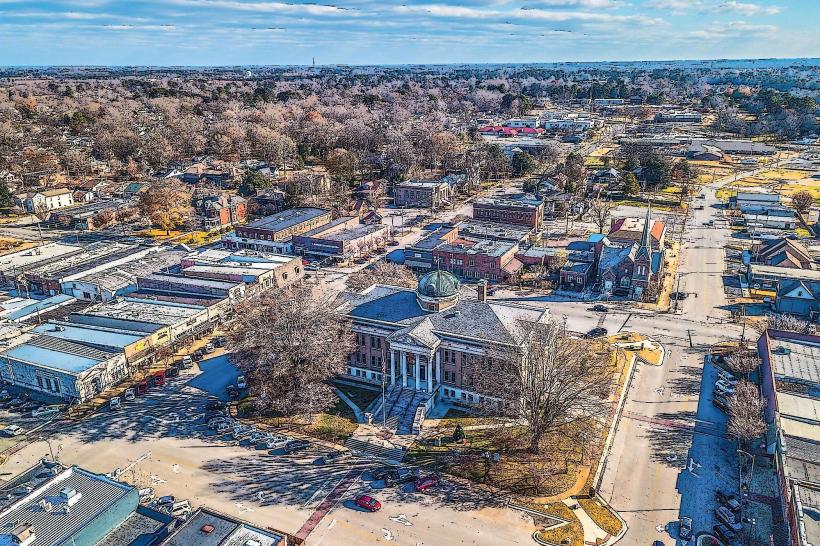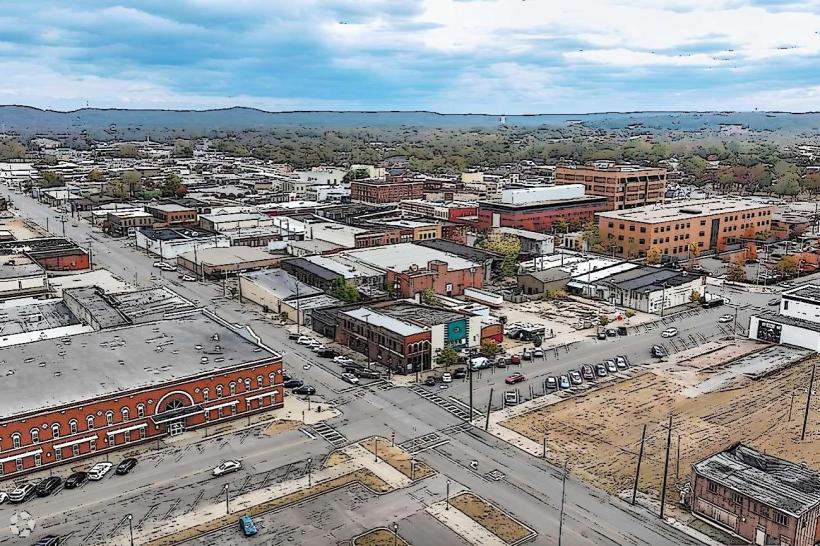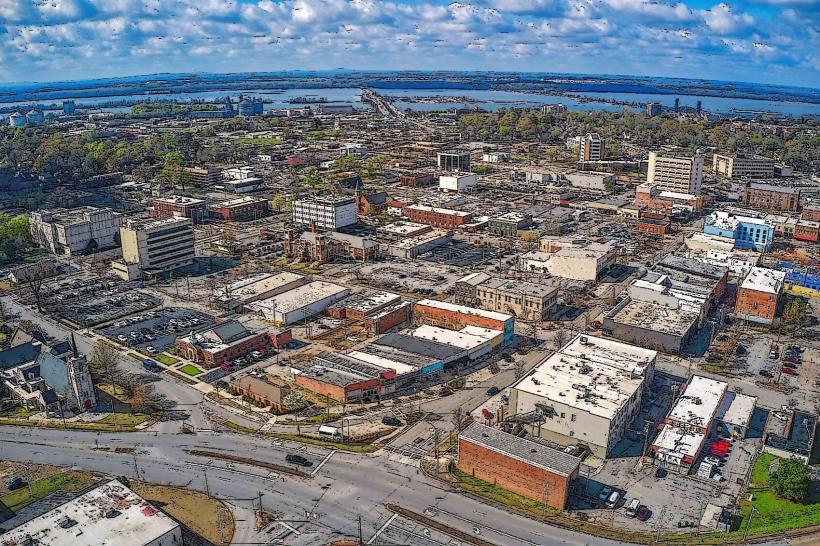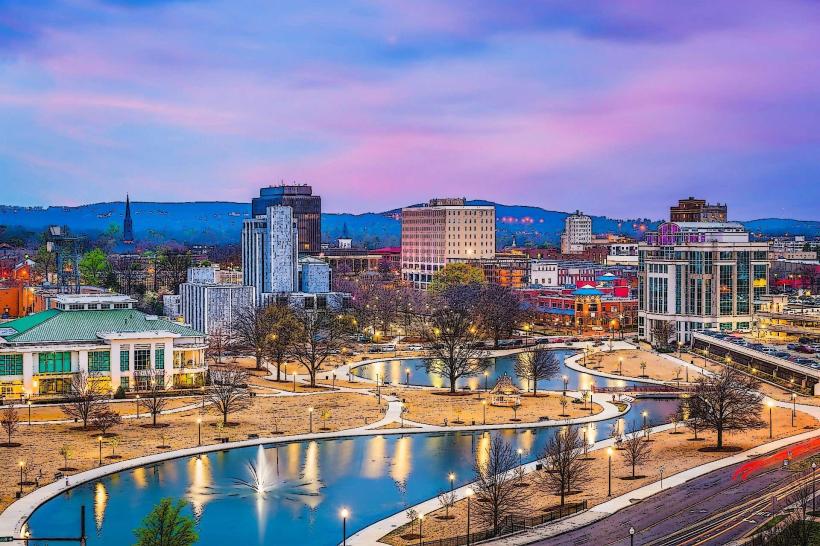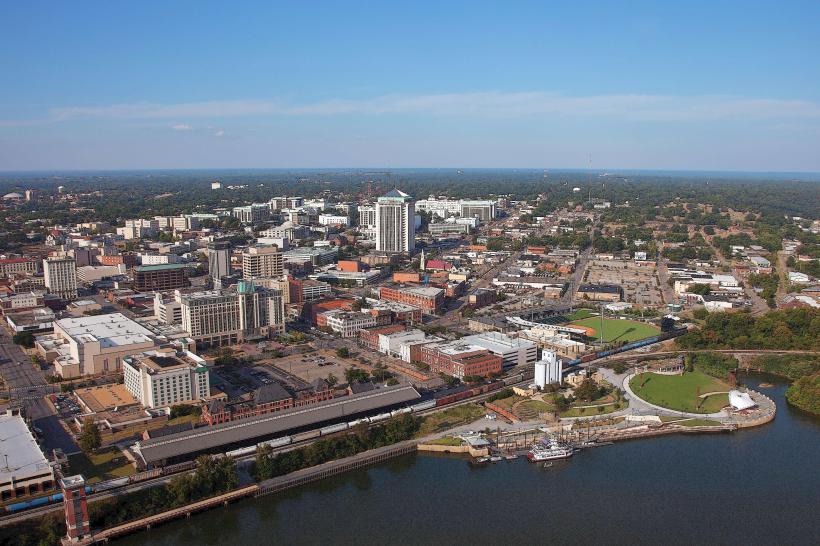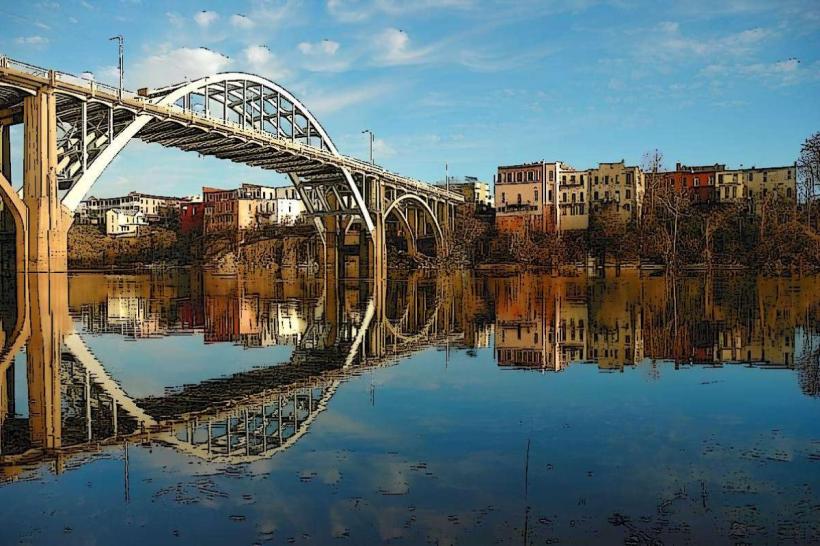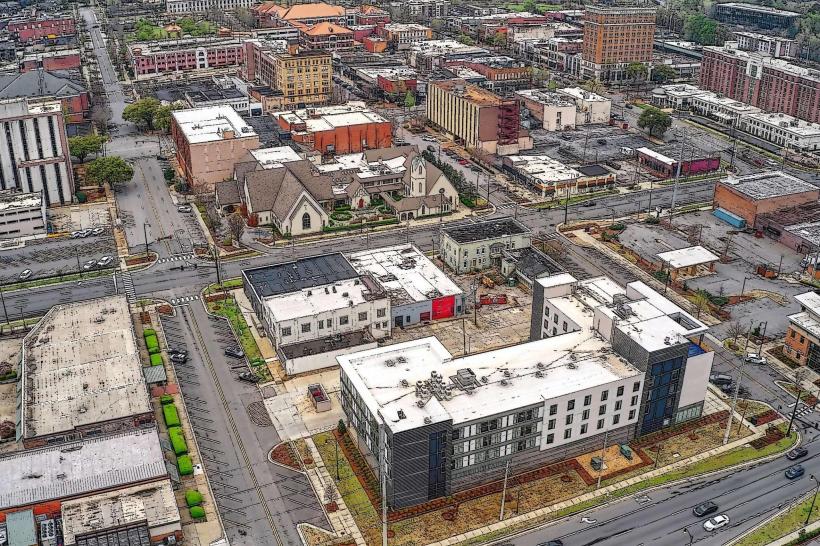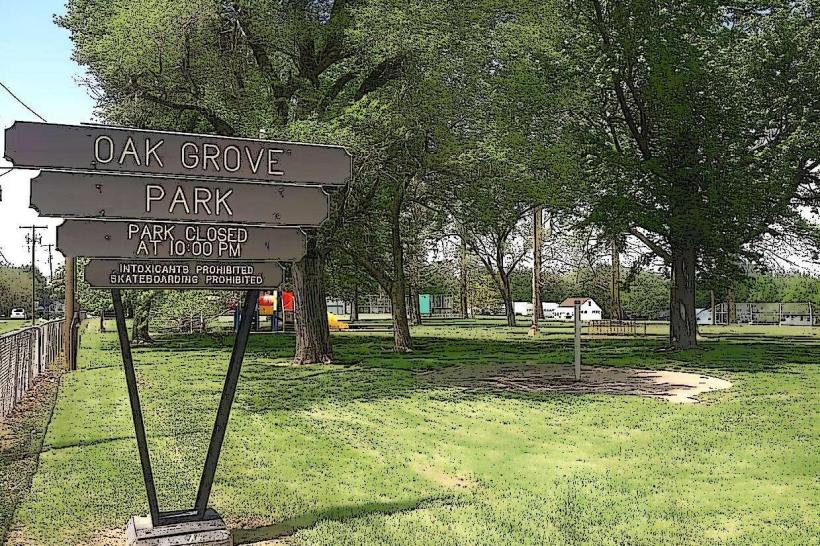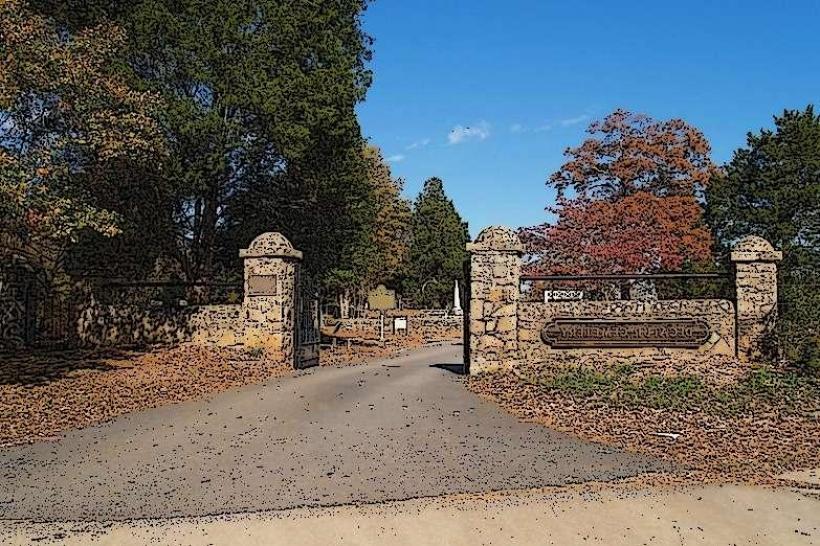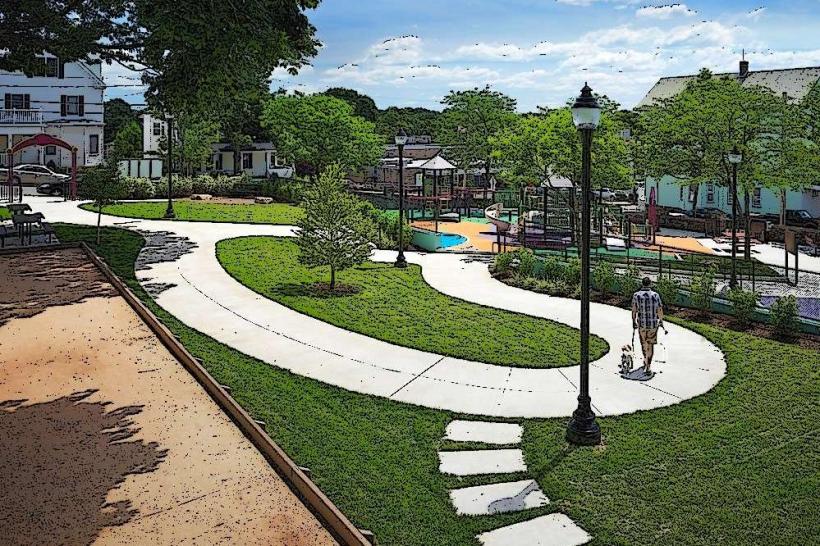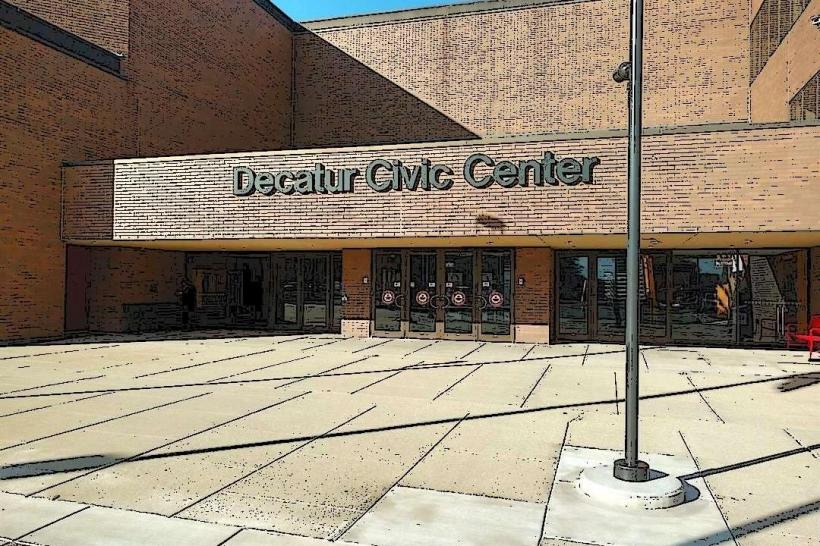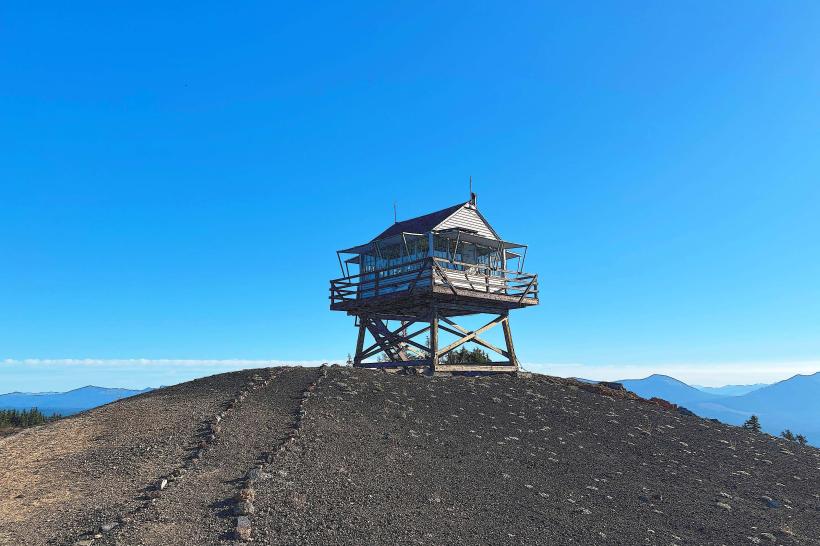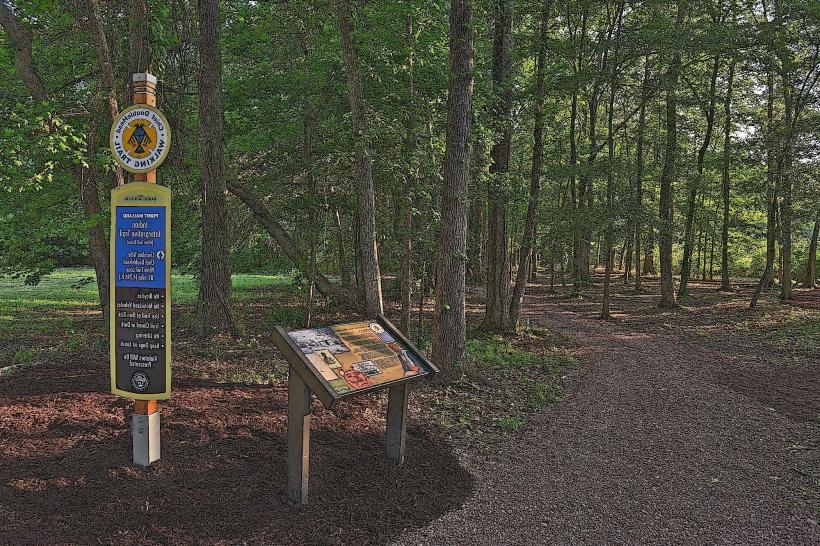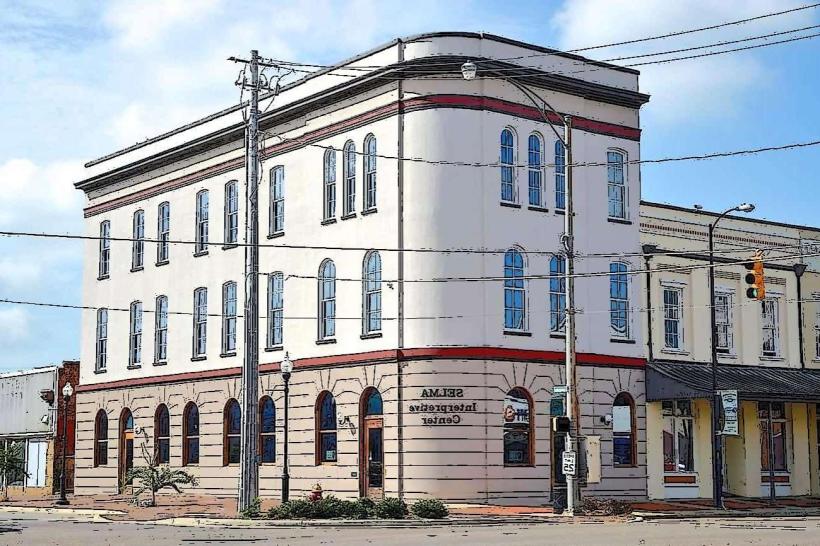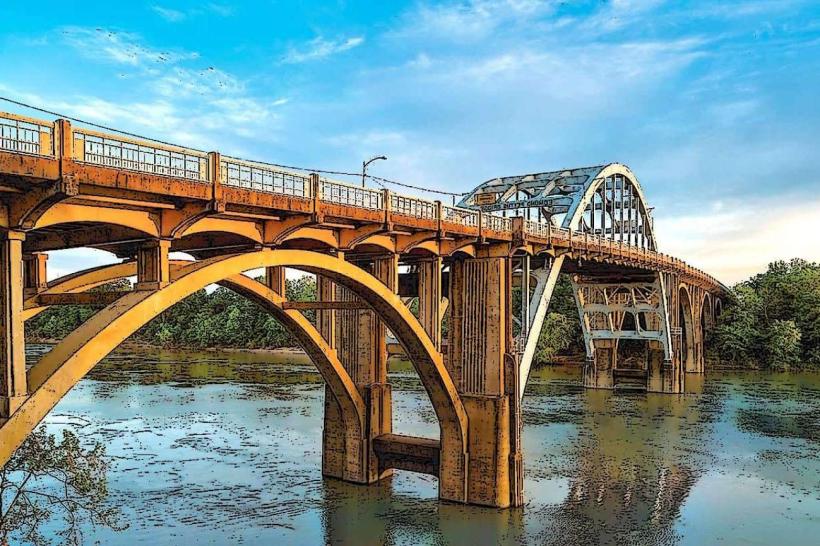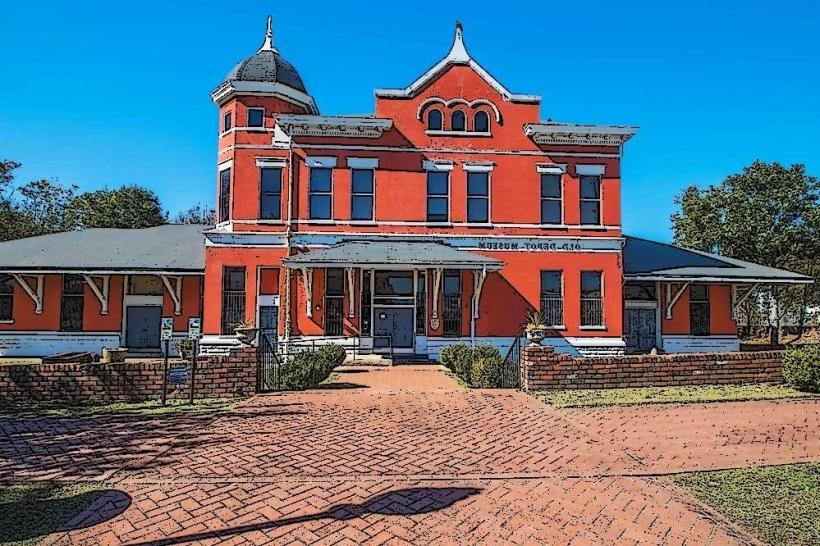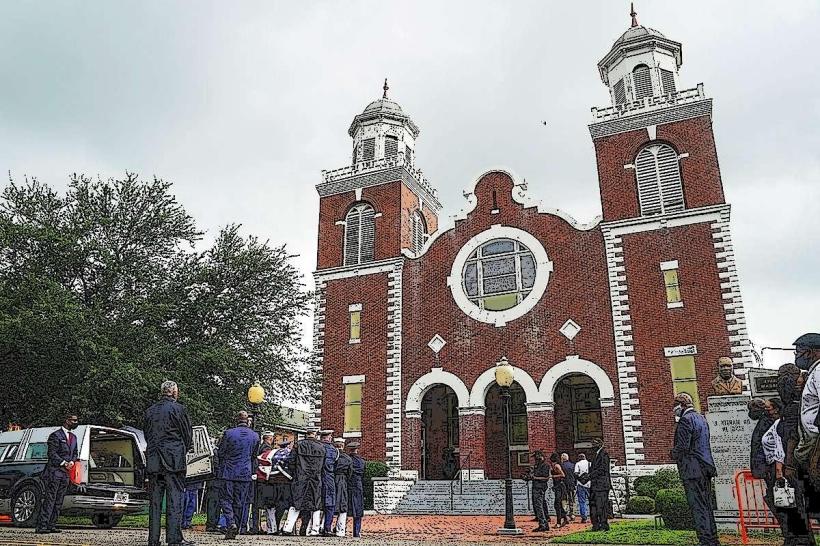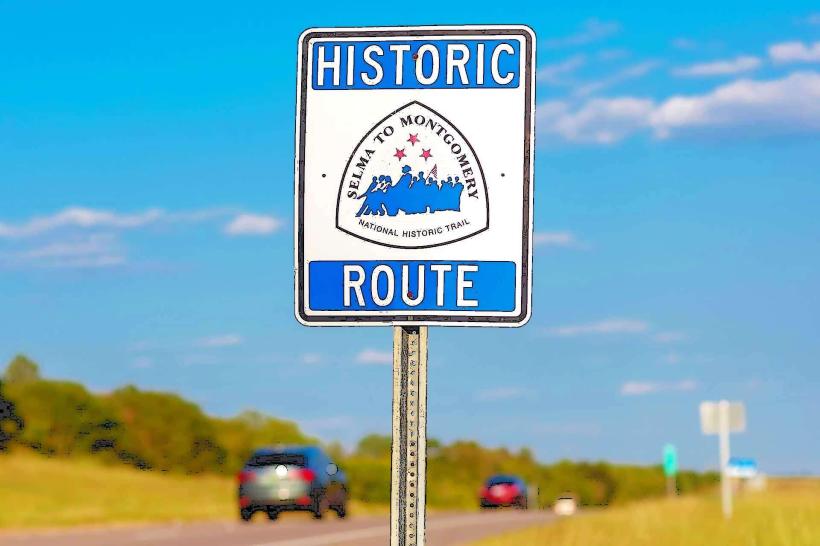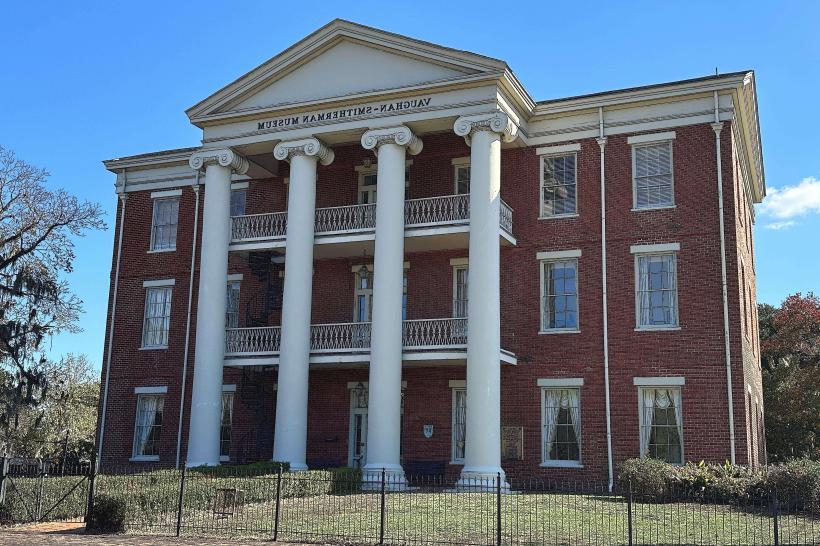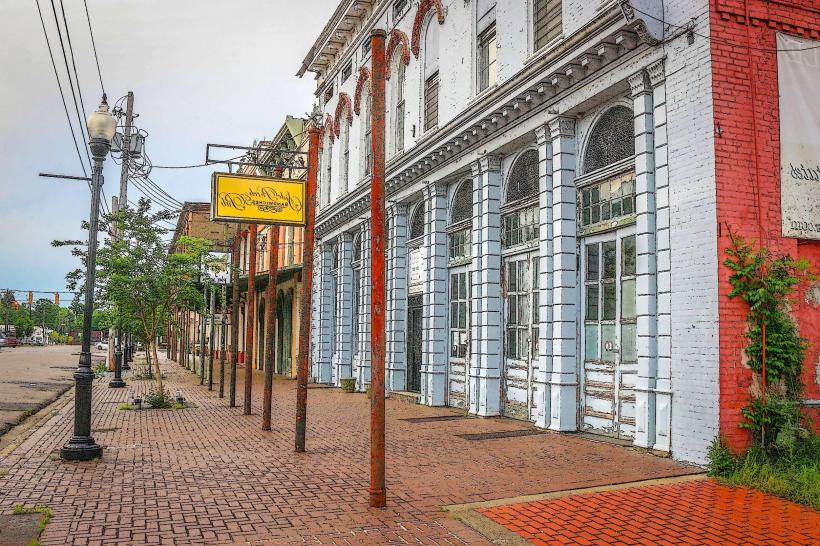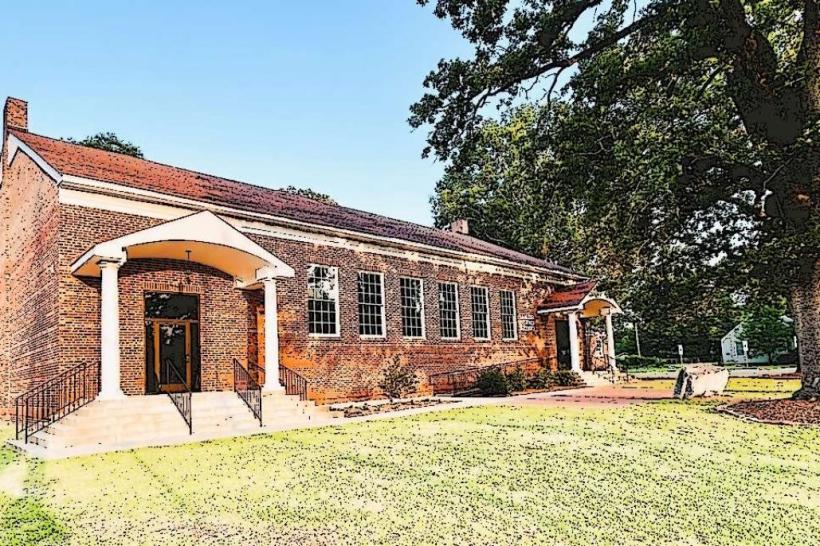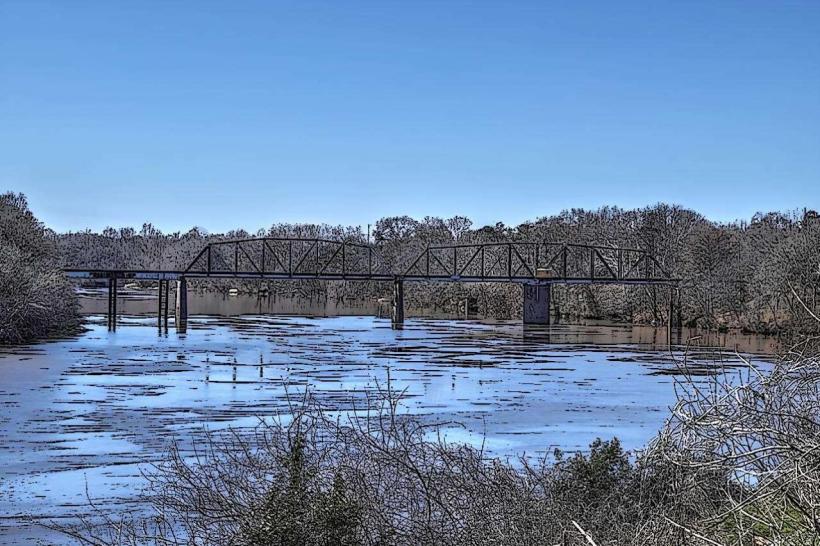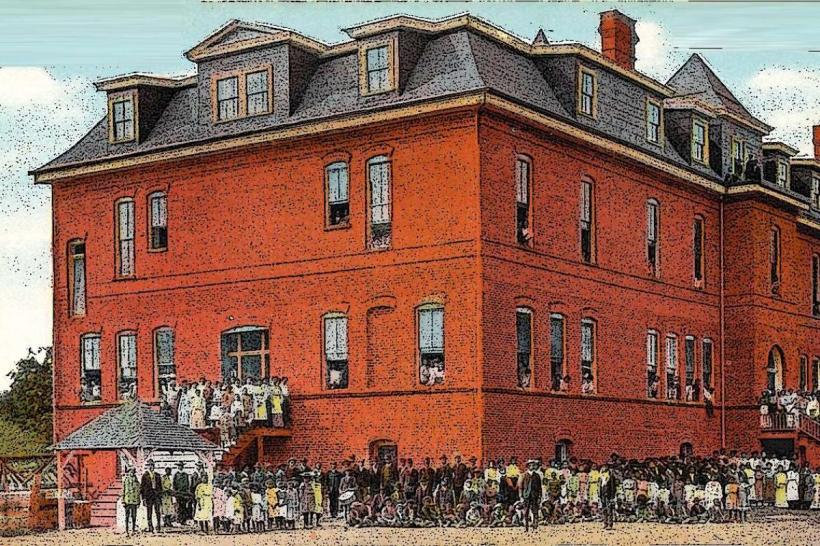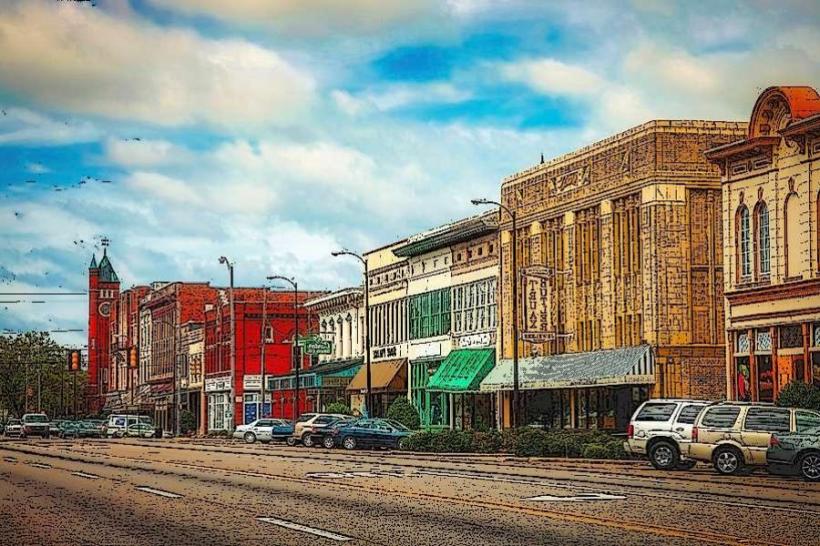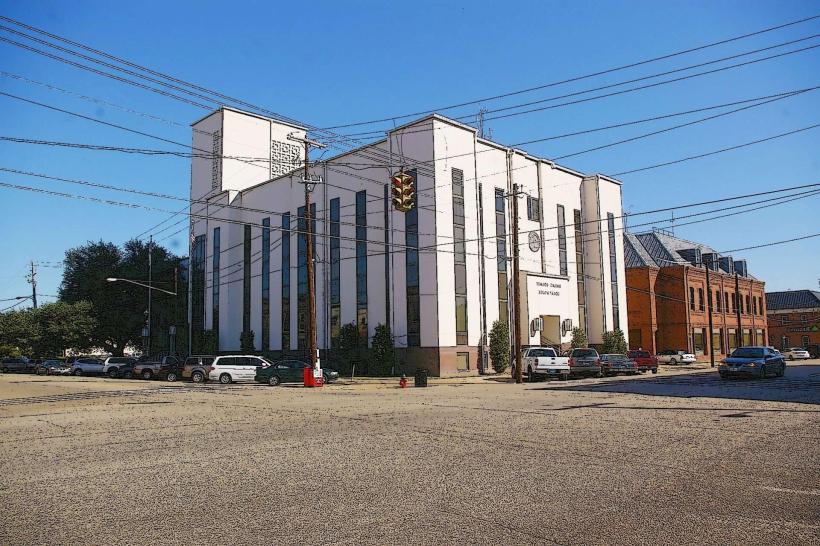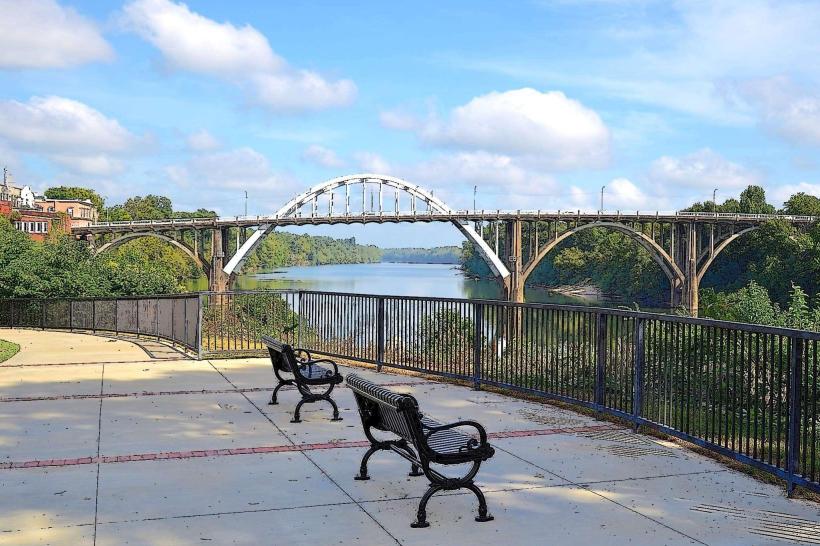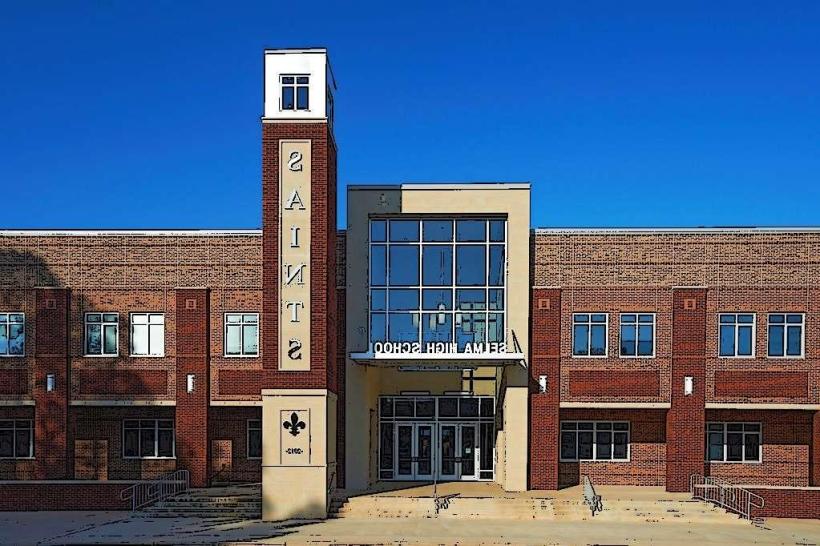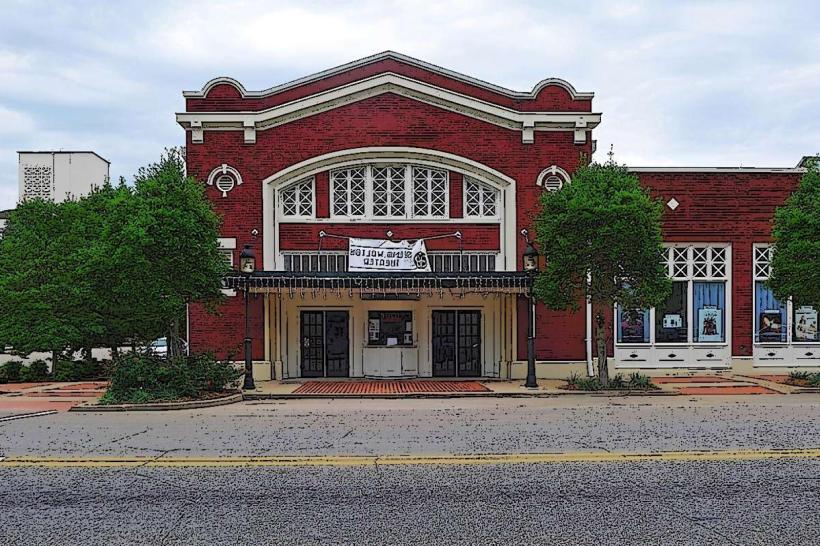Information
Country: USA AlabamaContinent: North America
USA Alabama, North America
Alabama, situated in the southeastern United States, occupies a strategic position bordered by Tennessee to the north, Georgia to the east, Florida and the Gulf of Mexico to the south, and Mississippi to the west. Covering approximately 52,420 square miles, Alabama displays a remarkable geographic diversity, encompassing the Appalachian Mountains in the northeast, rolling hills and river valleys in central regions, and low, flat coastal plains along the Gulf. Its landscape is shaped by fertile soils, notably in the Black Belt region-a wide, dark, rich soil area historically central to agriculture-as well as forested uplands and rugged northern terrain. The state features more than 77,000 miles of rivers and streams, contributing to its abundant freshwater resources and biodiversity.
Alabama’s climate is humid subtropical, with hot, humid summers and mild, relatively short winters. Summer temperatures frequently rise into the high 80s and 90s Fahrenheit, accompanied by high humidity, while winter lows rarely fall below freezing except in northern mountainous areas. Precipitation is abundant and distributed throughout the year, averaging 50 to 60 inches annually, with the Gulf Coast particularly susceptible to tropical storms and hurricanes. This climate supports extensive forests dominated by pine and hardwood species, as well as a high degree of aquatic and terrestrial biodiversity. Alabama is noted for being one of the most biologically rich states in the nation, particularly in freshwater species of fish, mussels, and snails.
Historically, Alabama’s economy was rooted in agriculture. Cotton cultivation dominated during the 19th century, facilitated by the fertile soils of the Black Belt. Over time, the state diversified into other crops such as peanuts, soybeans, and poultry production. Industrial development accelerated in the late 19th and 20th centuries, particularly in Birmingham and surrounding areas, transforming the economy with steel production, ironworks, and later chemical manufacturing. The automotive industry has become a major economic driver, with significant plants producing vehicles and components for domestic and international markets. Aerospace and defense industries are also prominent, particularly around Huntsville, contributing research, engineering, and high-tech manufacturing to the economy. Timber and paper industries remain significant due to Alabama’s extensive forested areas.
Alabama’s population exceeds five million, with urban centers concentrated in cities such as Birmingham, Montgomery, Mobile, Huntsville, and Tuscaloosa. Urban growth is driven by industry, education, and healthcare, while rural communities maintain agricultural and small-town traditions. The state’s demographic composition reflects a long-standing African American presence, European settler heritage, and remnants of Native American populations. Cultural influences permeate daily life, with traditions in music, cuisine, and festivals reflecting both historical legacies and contemporary diversity.
Education in Alabama is structured through public and private systems, encompassing K-12 schools, community colleges, and universities. Higher education institutions contribute to research and development, particularly in aerospace, engineering, medicine, and agriculture. The state emphasizes vocational and technical education alongside traditional academic programs to support its industrial and technological sectors.
Infrastructure in Alabama is extensive, with over 75,000 miles of highways and significant rail and port systems enabling the transport of goods and people. Its proximity to the Gulf of Mexico facilitates maritime trade, while river systems such as the Tennessee, Alabama, and Mobile rivers support inland commerce and hydroelectric power. Utilities, healthcare networks, and communication systems are generally well-developed, ensuring connectivity for both urban and rural populations.
Politically, Alabama operates under a state constitution that organizes governance into executive, legislative, and judicial branches. Local government is structured through counties and municipalities, managing public services, law enforcement, and urban planning. The state has historically played a significant role in regional and national politics, particularly in civil rights, economic development, and policy debates.
Environmental management is an ongoing concern, balancing industrial and urban growth with the preservation of forests, wetlands, rivers, and wildlife. Conservation efforts focus on protecting endangered species, maintaining water quality, and sustaining agricultural and forest lands. Alabama’s diverse ecosystems support recreation, tourism, and local livelihoods, while also contributing to climate resilience and biodiversity preservation.
Economically, geographically, and socially, Alabama is a complex state that combines traditional Southern culture with modern industry and technological innovation. Its fertile lands, extensive waterways, forested regions, and growing urban centers form a dynamic landscape that continues to evolve within the southeastern United States. Its natural resources, strategic location, and human capital create a foundation for ongoing economic growth, cultural richness, and environmental stewardship.

